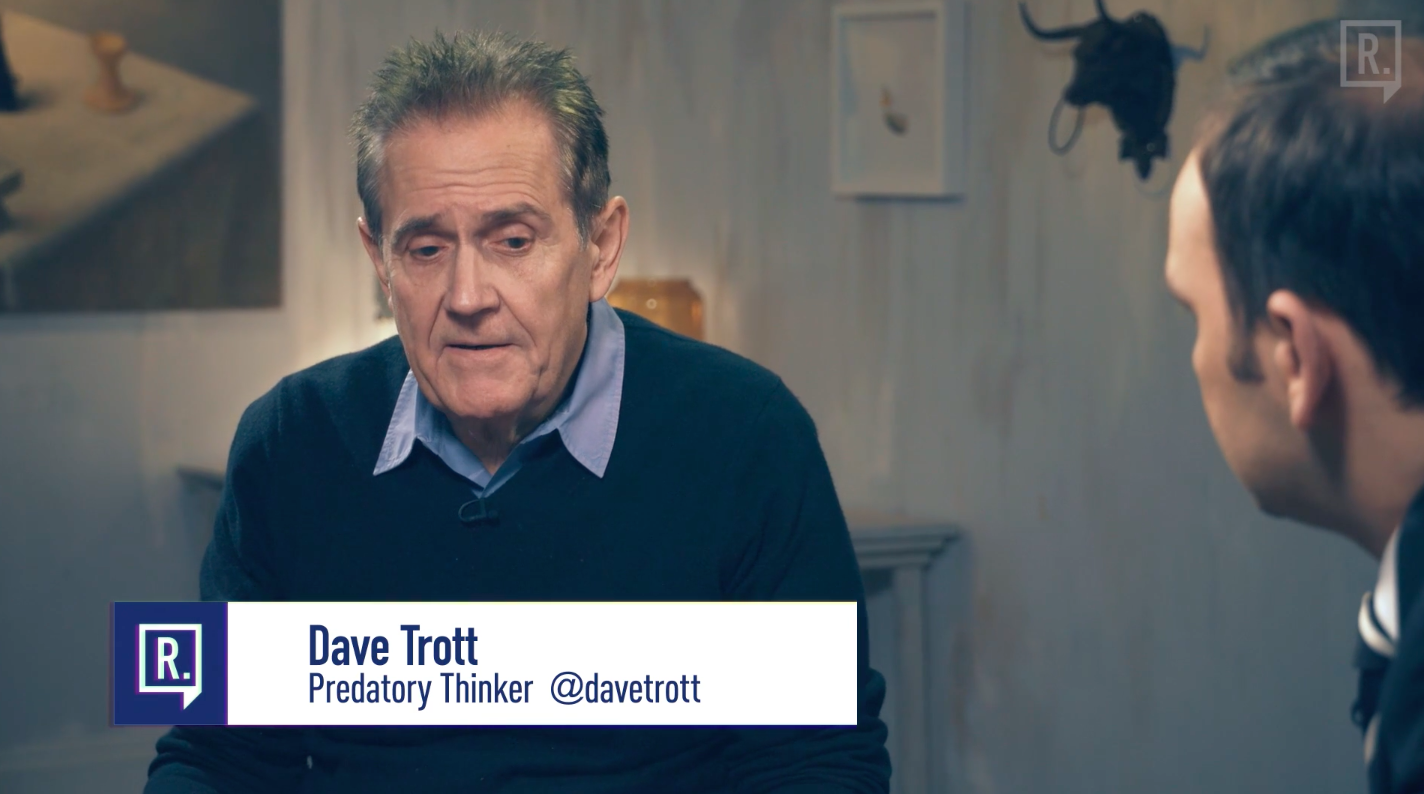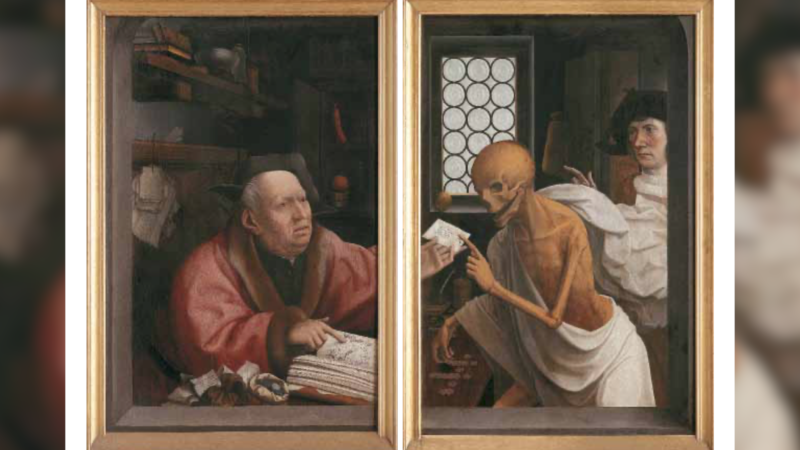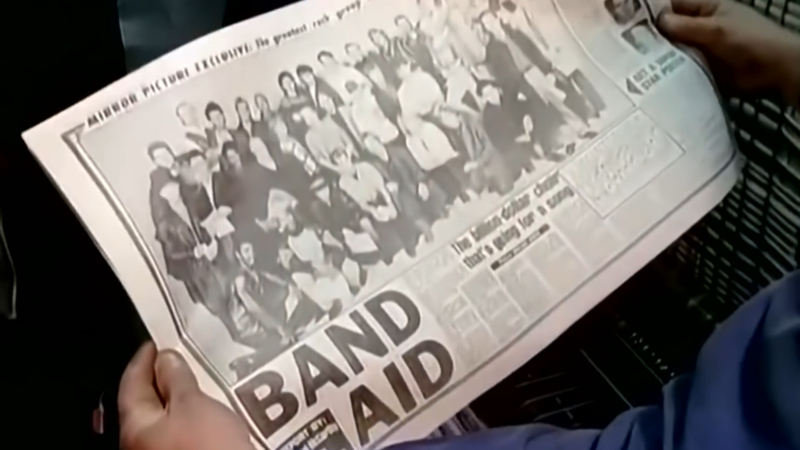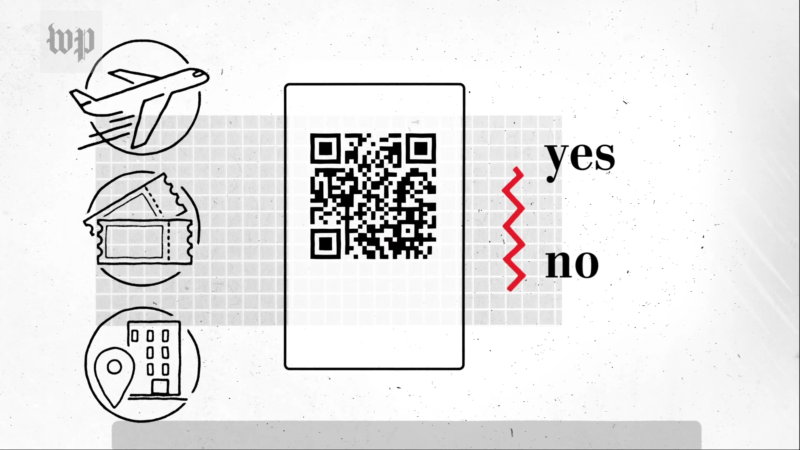The creative industries are worth about 10 million pounds an hour to the UK economy. Globally now, all governments recognize the importance of this enigmatic sector to drive their growth.
But are creativity and commercial forces compatible? If they are, why is all the advertising we see today internationally, so incredibly bland? Why has Hollywood lost its originality, and has big data and ad tech removed risk-taking from the creative process?
Host, Ross Ashcroft, met up with author and ad agency copywriter, Dave Trott, to discuss.
Very few of us have the acting skills necessary to fake interest in the latest Oscar winner. Even fewer people have the patience needed to put up with being continually patronized by another piece of infantile advertising. Dave Trott, has for a long time, crusaded against this creative hinterland of terrible commercials and so-called big ideas that aren’t. Trott makes the point that at present there appears to be an inverse relationship between the notion of advertising as a craft and the dearth of ideas and creativity that stem from it.
Trott explains:
“The craft has gotten superb and better than ever. And as it has, the ideas, the thinking, has gotten worse and dumber and more boring. Consequently, the crashing dullness of the ideas and the thinking is covered up by the massive craftsmanship of the execution. The craft has become an expensive way of covering up dull, boring ideas. It’s like putting perfume on a bad smell”.
Writing in his blog, Trott quotes the creative thinker, Edward de Bono’s contention that there are many people who call themselves creative who are actually mere stylists.
“Without separating the craft from the concept, there is no creative thinking, and that’s absolutely where we’re at now. There is no creative thinking, just enormous style”, says Trott.
The copywriter claims that advertisers have removed the fun, likeness and wit from their product and treat their audience as if they were children by limiting the creative scope in order to sell it. The advertisers will be influenced by what their clients want to buy which is invariably the creatively compromised product that’s for sale. So the process isn’t a one way street.
Both the advertising agencies and the client have to take responsibility for their roles in helping to nurture a creatively risk-free environment. The latter will buy product based on certain expectations as to what they think the audience will like, not necessarily what they actually like.
“The audience used to be the person in the street who wanted to buy the product. Now the audience is 100 percent the client”, says Trott.
Clients have an inability to be open to rigorous criticism of their own brand and to accept that creative-based decision-making frequently plays second fiddle to the data produced by agency planning departments to justify their financial bottom lines.
The big conglomerates are primarily motivated by money, reputation and prestige. The people who run them are accountants, not creative types.
From the advertisers perspective, the prevailing culture is all about keeping the client happy by hanging on to the big accounts, winning awards and doing what the client wants them to do, well, rather than creatively.
Under such a circumstance, advertisers become mere functionaries which, in turn, has led to the current creative death spiral.

Trott quotes a very perceptive remark by Rory Sutherland:
“Creative people have a fear of the obvious but they must sell their work.”
Trott says that nobody ever teaches clients why the obvious is wrong.
“In the UK, says Trott”, “18.3 billion is spent every year on all forms of marketing and advertising, 4 percent remember positively, 7 percent remember negatively. 89 percent is not noticed or remembered. Nobody trains clients that your main focus might not be right. It can be right and it can be dull in which case it’s part of the billions of pounds that doesn’t get noticed or remembered.”
This unsustainable state of affairs is made all the more problematic by junior clients whose decision-making, based largely on behavioural jargon and algorithms, tends to be constrained because they lack the entrepreneurial flair of their more senior peers.
The established rule of thumb within a conglomerate is that it’s at the junior level where many of the key decisions are made. But these are the people who kill creativity. What’s left for the senior people is dull, but beautifully executed bits of nameless cryptic art, which the CEOs assume is the best the agency can do.
Trott says:
“The clients are as guilty of this as the creative guys because they love to do execution. They love to shoot film and they love to make things look beautiful and flawed but it was good for that reason. Planners will do it because they’ve got a theory that if you get the brand values right, people will buy it. You don’t have to do anything as crass as putting a name on it and having people remember that name. And so you have 90 percent of absolutely beautifully crafted stunning wallpaper that’s all interchangeable because you didn’t remember the name. Nobody remembers the name.”
Trott adds that creative ideas come from out-thinking the competition, otherwise its just a style exercise. The copywriter argues that the best way to go about it is by putting art directors and copywriters together into teams.
Trott likens the relationship to a pilot and navigator. The navigator is usually the senior officer. The pilot’s in charge of the plane while the navigator’s in charge of the mission. The pilot’s the art director, the navigator’s the copywriter who ensures the final destination is the right one with use of the right ordinance.
By contrast, the role of the pilot is the ensure that both of them evade everything they’re supposed to evade. The pilot flies the plane but the mission is down to the navigator. The navigator (copywriter) will erect the structure of the job in hand as well as the process of out-thinking others in order to deliver an unusual product.
Trott remarks, astutely:
“If you leave it to me it will be right but dull. If you leave it to an art director, it will be exciting but wrong.”
Using a football analogy, Trott adds:
“My job is to get the ball up the field, give it to the centre forward and then the little striker has to run onto it and stick it in the net. Someone’s got to start the attack and put it in the right place at the right time.”
Unfortunately, over the last few years, advertising – transformed by digital technology and behavioural-targeting ad-tech companies – has increasingly become a science, not something memorable that would influence what people would put in their shopping basket later on. However, given the fact that millions of people use ad-blocking software, there is minimal evidence that all this technology actually works.
In contrast to the era of advertising depicted in the US drama series, Mad Men, the digital form of advertising is all about big data and the technology of Big Brother. Trott has been absolutely candid about ad-tech, describing it as a formulaic and non-creative way to switch your brain off to thus avoid having to engage in strategies about how to out-think opponents.
“If you understand anything about the human mind”, says Trott, “a bigger idea will always be 20 little ideas. That’s how you’re programmed from the minute you’re born. If there’s 19 identical things and one that’s different, actually in your mind there’s two. There’s a whole bunch of similar things and one that isn’t. And the one that isn’t gets 50 percent of your mind and the other 19 share 50 percent your mind.”
Trott characterizes tech as the tiny ideas as opposed to the one big idea. Whereas the mass market of advertising speaks to everyone, ad-tech uses machines to seek individuals out and, effectively pester them according to data, without having to do any thinking. Trott says creativity is about disobedience, being an outsider and breaking the rules which is the antithesis of technological deterministic behaviour.
“What happens now”, says Trott, “is, everybody is either scared stiff to break the rules or doesn’t want to break the rules. You’re no longer telling jokes because they’re funny, you’re telling them because they make more money. You’re no longer doing art because it’s daring, you’re doing it because it makes more money. If you can’t justify it making more money, you don’t do it.”

Author of Medici Money, Tim Parks, discusses the Medici banking dynasty and its legacy.

Has the pernicious creation of hero or saviour complexes derailed the collective good?

What are the consequences of immunity or vaccine passports and will these proposed temporary measures become the norm?